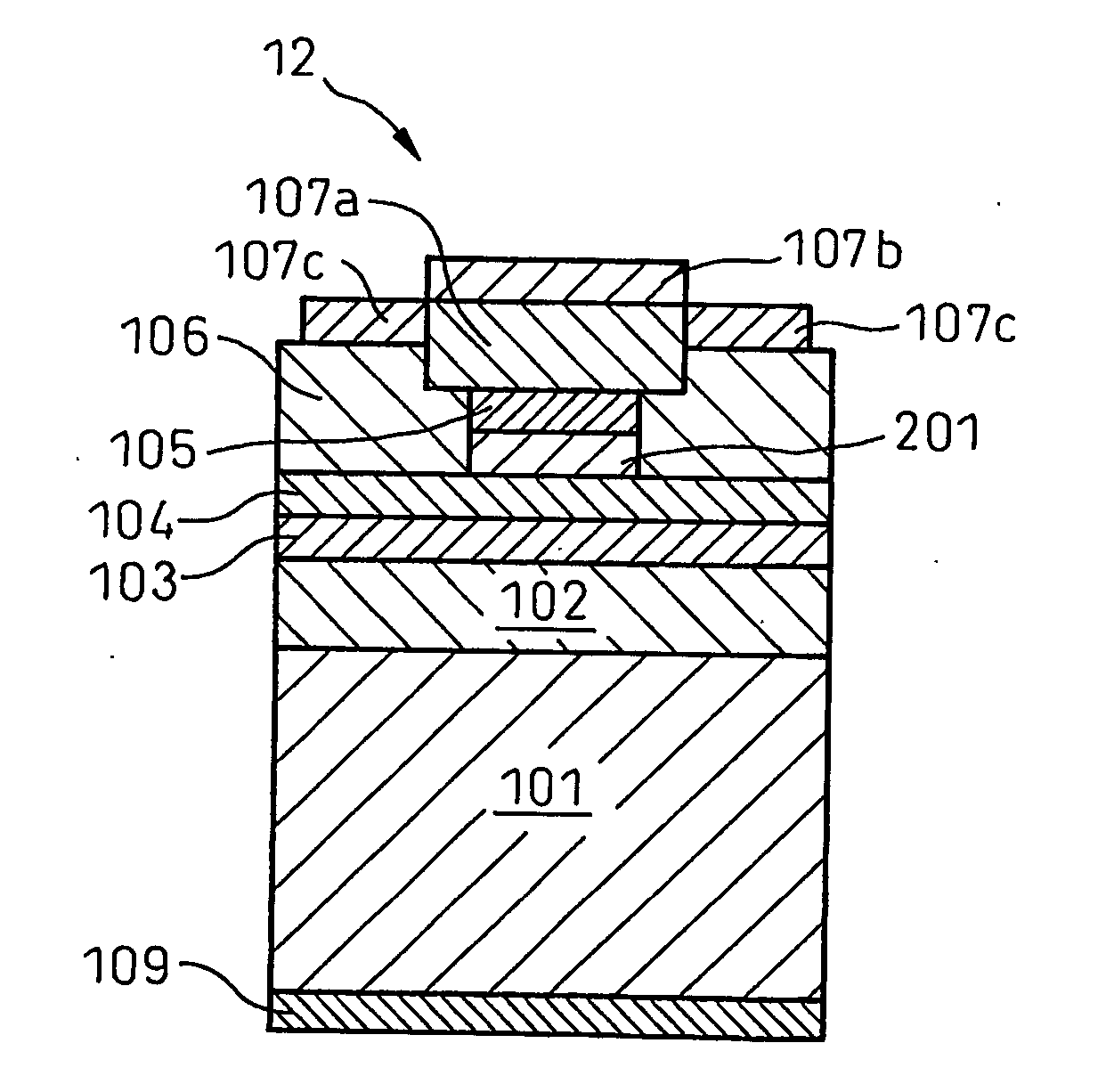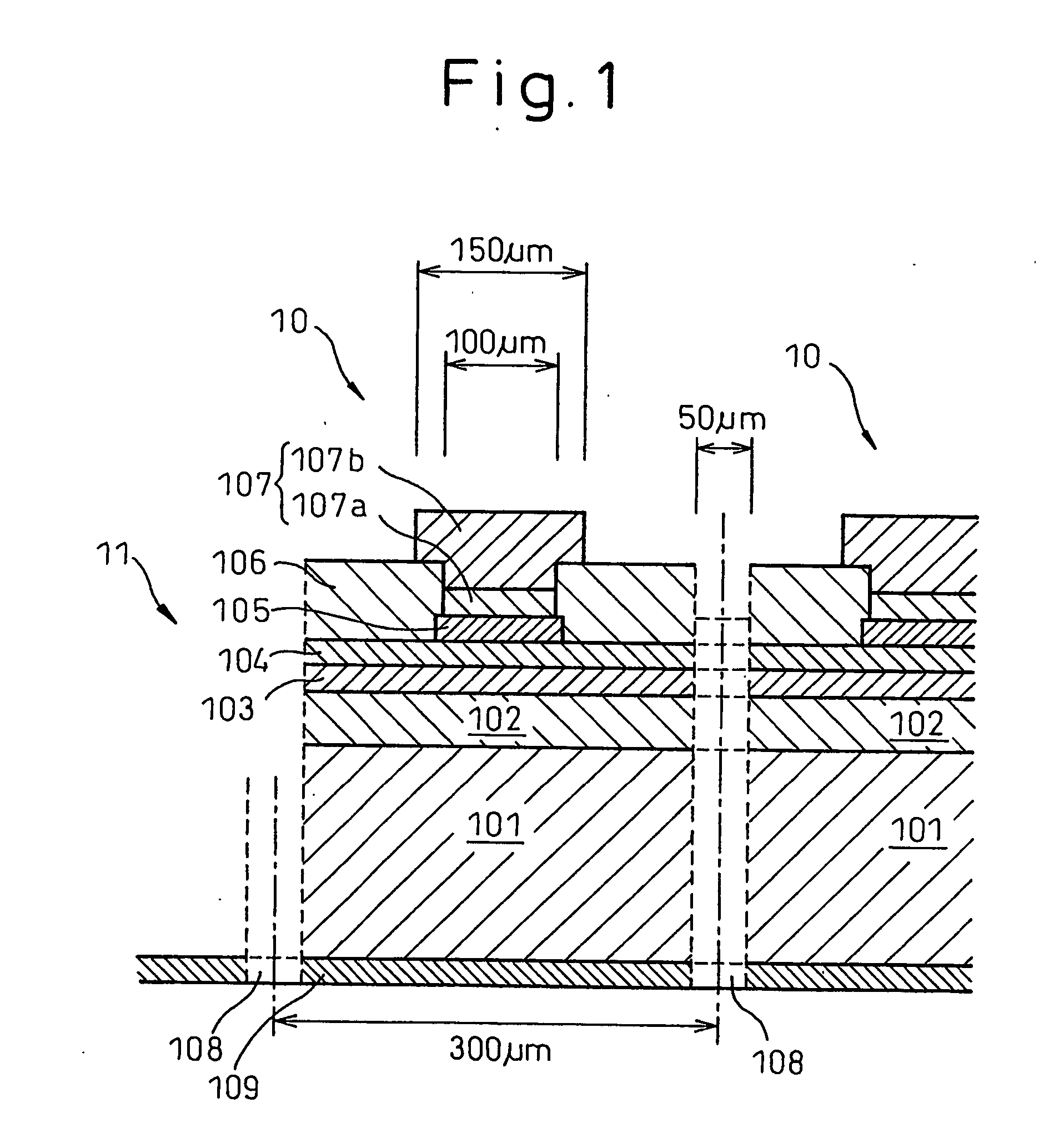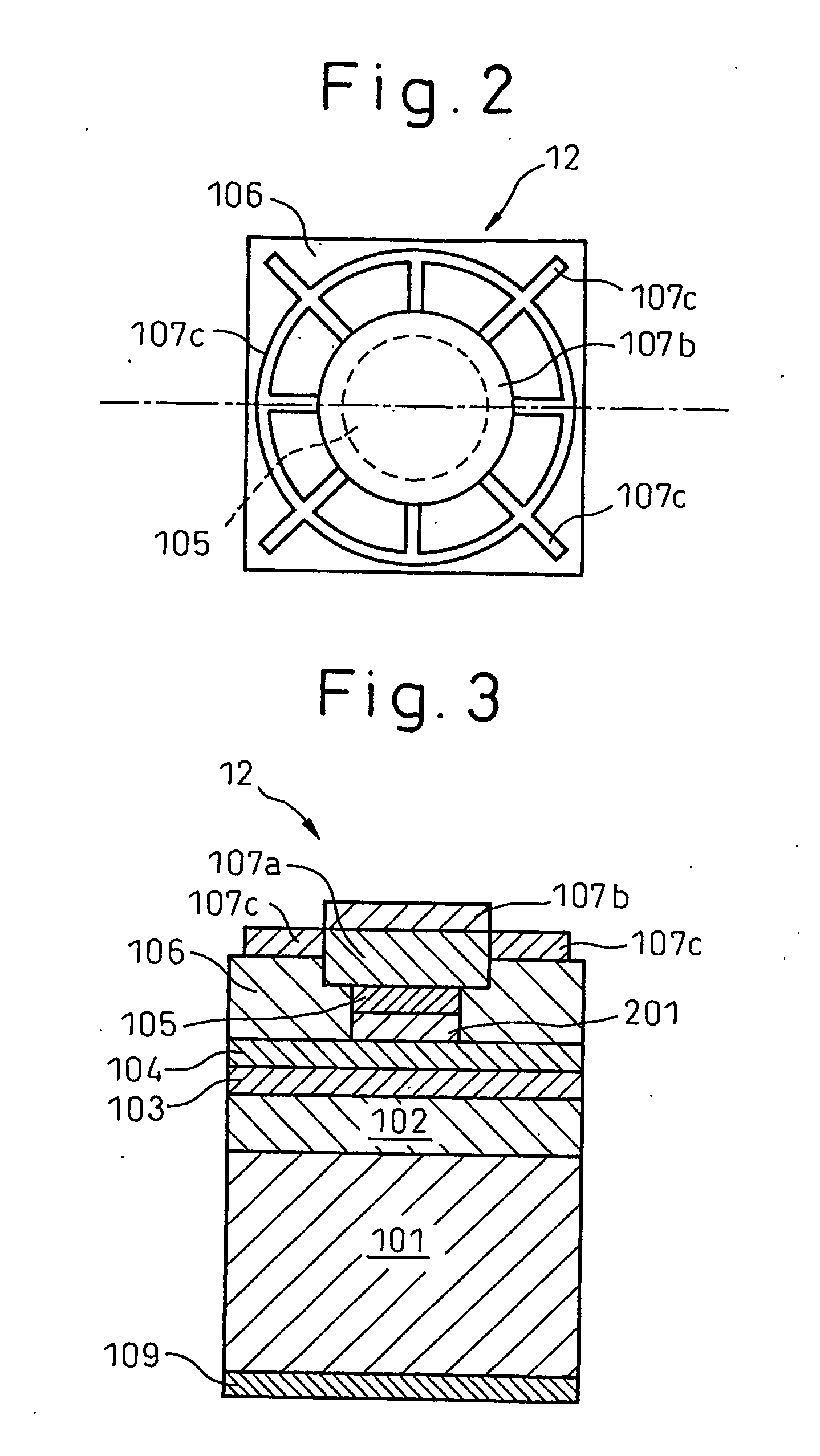Boron phosphide-based semiconductor light-emitting device and production method thereof
light-emitting device technology, which is applied in the direction of semiconductor devices, basic electric elements, electrical appliances, etc., can solve the problems of failure to achieve the diffusion of the device operation current widely in a light-emitting area, failure to achieve the emission intensity of a boron phosphide-based semiconductor light-emitting device to be fully attained, and failure to completely complete the effect of complete failur
- Summary
- Abstract
- Description
- Claims
- Application Information
AI Technical Summary
Benefits of technology
Problems solved by technology
Method used
Image
Examples
example 1
[0069] The boron phosphide-based compound semiconductor light-emitting device according to the present invention will next be described in detail, taking as an example a light-emitting diode (LED) employing a pad electrode having a bottom surface which is in contact with a high-resistance boron phosphide amorphous layer. FIG. 1 schematically shows the cross-section of a stacked structure 11 employed for fabricating an LED 10 having a double-hetero (DH) structure.
[0070] A phosphorus (P)-doped n-type silicon (Si) single crystal was used as a substrate 101. On the surface of the substrate 101, a lower cladding layer 102 formed of n-type boron phosphide (BP) was deposited through use of atmospheric pressure (near atmospheric pressure) metal-organic vapor phase epitaxy (MOVPE) means. The lower cladding layer 102 was deposited at 950° C. by use of a triethylboran (molecular formula: (C2H5)3B) as a boron (B) source and phosphine (molecular formula: PH3) as a phosphorus source. The carrier...
example 2
[0079] The boron phosphide-based compound semiconductor light-emitting device according to the present invention will next be described in detail, taking as an example a double-heterojunction (DH) light-emitting diode (LED) employing a pad electrode having a bottom surface which is in contact with the surface of a boron phosphide amorphous layer of a multi-layer structure.
[0080]FIG. 2 is a schematic plane view of the LED 12 according to Example 2. FIG. 3 schematically shows a cross-section of the LED 12 taken along the broken line A-A′ shown in FIG. 2. In FIGS. 2 and 3, the same members as shown in FIG. 1 are denoted by the same reference numerals.
[0081] On an n-type GaN light-emitting layer 104 which had been formed in the same manner as described in Example 1, an undoped p-type boron phosphide amorphous layer 201 was formed. The carrier concentration and the thickness of the p-type boron phosphide amorphous layer 201 were controlled to 8×1018 cm−3 and 12 nm, respectively. On the...
PUM
 Login to View More
Login to View More Abstract
Description
Claims
Application Information
 Login to View More
Login to View More - R&D
- Intellectual Property
- Life Sciences
- Materials
- Tech Scout
- Unparalleled Data Quality
- Higher Quality Content
- 60% Fewer Hallucinations
Browse by: Latest US Patents, China's latest patents, Technical Efficacy Thesaurus, Application Domain, Technology Topic, Popular Technical Reports.
© 2025 PatSnap. All rights reserved.Legal|Privacy policy|Modern Slavery Act Transparency Statement|Sitemap|About US| Contact US: help@patsnap.com



